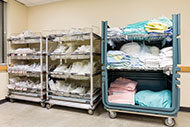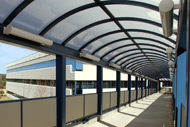
The innovative work that hospitals and health systems do often gets buried deeply in the media talking points about health care reform — if it ever gets mentioned at all. The fact is that many health care organizations as well as researchers and others allied to the field have been advancing innovation at a brisk pace for quite some time now.
Care delivery is being transformed while quality is improving in many areas.
Noteworthy innovations are occurring in hospital design and construction, infrastructure, infection prevention, materials management and elsewhere. Technology is certainly helping to accelerate improvements in the care environment, but the painstaking work of ideation, product development and forging partnerships, employing root-cause analysis practices and process improvement principles often is just as foundational to these advances.
We’ve devoted this year’s edition of Trends in Health Care to exploring the many ways that innovation is shaping the built environment. As you’ll see in these reports, significant changes are taking place, not the least of which is dovetailing workflow design considerations with planning and design.
The improvements wrought from these efforts are driving greater efficiencies and cost reductions while helping to create modular, flexible environments that can more easily adapt to whatever technological innovations may be implemented now and in the future. In other areas, safety advances have brought significant reductions in many categories of health care-associated infections, including a 13 percent reduction in methicillin-resistant Staphylococcus aureus between 2011 and 2014, the Centers for Disease Control and Prevention reports.
The coming years will continue to provide a dizzying pace of change — and with it the possibility to reimagine and improve the environment in which care is delivered. Take a look at the innovations being advanced in the health care environment today.






